Ferrara: one thought at a time
I left you several months ago somewhere between the Galápagos and Parma. Then, the new year began with a weekend at a friend’s home in Ferrara.
There are cities that make a grand entrance, grabbing attention with majestic landmarks, towering skylines, and crowds that surge like waves. And then there’s Ferrara—quiet yet captivating, drawing you in without fanfare. It wins you over gradually, without urgency, through its unhurried pace and understated elegance.
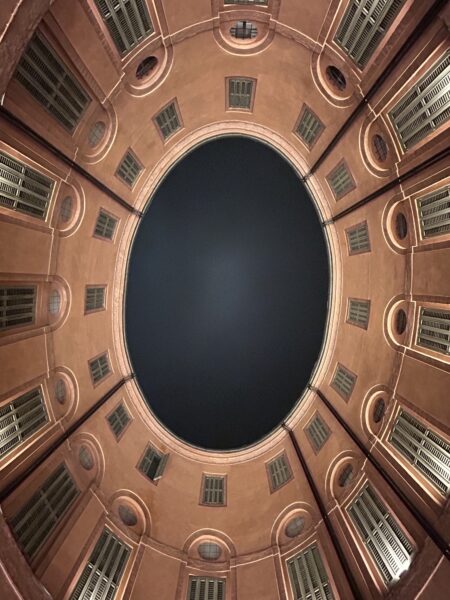
Antonio Foschini Roundabout
Tucked away in the heart of the Teatro Comunale, this oval square once served as a carriage passage. Nowadays, it is an intimate space where architecture plays with perspective in a unique way. Stand in the centre and look up—suddenly, the sky appears perfectly framed by the ellipsis-shaped openings, like a painting. There is an almost cinematic quality to this place, especially at night, when soft lights cast delicate shadows across the walls.
I linger for a while, gazing upwards, watching the sky move. My mind drifts to planets and their elliptical orbits around the sun, much like the shape of this square. Then I start thinking about abstract ideas—the ellipse in linguistic terms, the unspoken, the implied, what exists but remains unstated; absence shaping presence; the silence between words; the pause that allows deeper meanings to emerge.
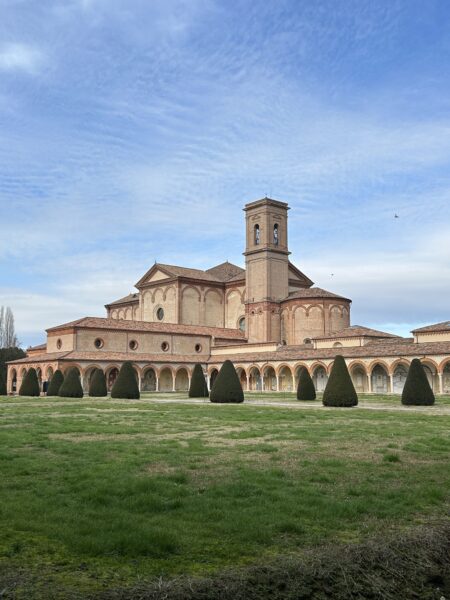
The Certosa of Ferrara: finding profound meaning
Speaking of deeper meanings and moments of reflection, the Certosa di Ferrara springs to mind. A monumental cemetery that is not simply a resting place, but an open-air museum—an intimate corner of the city where history unfolds among elegant porticoes, silent sculptures, and tombstones etched with entire life stories.
Walking through its avenues is more than just a visit. The city’s noise dissolves here, leaving only the sound of footsteps against stone. Shadows of cypress trees stretch over the slabs, while inscriptions whisper of distant eras and figures who left their imprint on Ferrara’s history.
The Church of San Cristoforo within the Certosa, with its austere façade and intimate interior, is the spiritual heart of this place. Then there are the noble family chapels—small masterpieces of funerary architecture, reflecting the tastes and sensibilities of their time.
Yet the Certosa is not a place of sorrow—it is a place of remembrance. Beauty and memory intertwine here, inviting quiet contemplation. Pause for a moment, and you can almost sense the city breathing just beyond the walls.
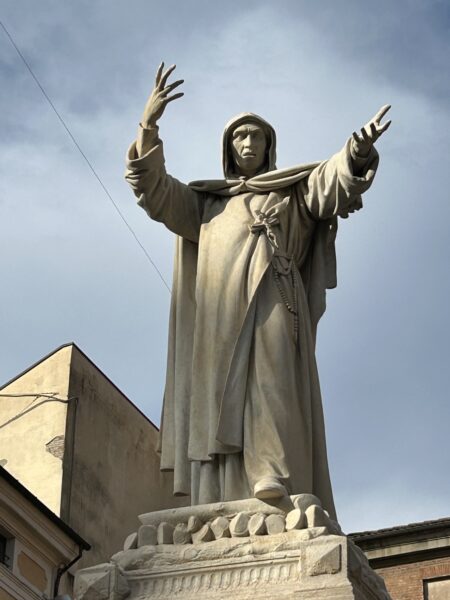
Ferrara on two wheels
Within and beyond its walls, Ferrara is the city of bicycles. Here, they are not just a means of transport but a way of life. People pedal with ease, without hurry, as though it were the only sensible way to move. Other Italian cities have this rhythm—Bologna especially, and even Turin in its own way.
Cycling along Ferrara’s Renaissance walls is a pleasure that defies explanation. But, as in all great travel tales, mishaps are inevitable. As we cycle through the city, my rear wheel suddenly fails. So, we end up dragging my trusty bike back to my friend’s home for several kilometres. We laugh—because life isn’t always perfect. Sometimes, life just deflates!
Via delle Volte
Certain streets invite you to slow down. Via delle Volte is one of them—a medieval pathway of arches and suspended passages. But, before my bicycle gives up, we speed through it, and the street reminds me of a time machine, but without technology, without artificial intelligence.
Every stone here has witnessed something; every corner whispers fragments of life, trade, and secrets buried within the walls. We return in the evening, and under the dim glow of the lights, I imagine the ghosts of history still passing through, caught in a slightly suspended dimension.
A hug at the table
For me, travelling also means immersing myself in the fragrances and flavours of food prepared by the locals. Ferrara has a unique way of making you feel at home. Its cuisine is direct, authentic.
The pumpkin cappellacci feel like an act of kindness, especially the ones from Trattoria il Cucco. I try them on my first evening in the city. The owners chat with us leisurely, as there aren’t many diners at that hour, and outside, it is raining and cold. But Cucco embraces you with the warmth typical of Emilia—an openness without pretence (I had felt this same sensation in Parma too). In this part of Italy, people are welcoming, and there’s no need to explain why.
The cappellacci themselves are deeply comforting. The sweet violin squash filling and the rich meat sauce create a perfect balance between delicacy and intensity.
Yet the best food I have in Ferrara are the cappelletti that my friend prepares at home for my last meal in Ferrara, served in broth. Cooking for someone is a true act of care. I imagine her selecting the finest ingredients before my arrival, rolling out the pasta by hand. Cooking is a hug at the table. Cooking for another person (beyond just oneself) is an act of sharing—a way of saying, “Look, these are the ingredients we have here, shaped by our winds, softened by our words, carried in our accents. Come, sit at the table with us.”
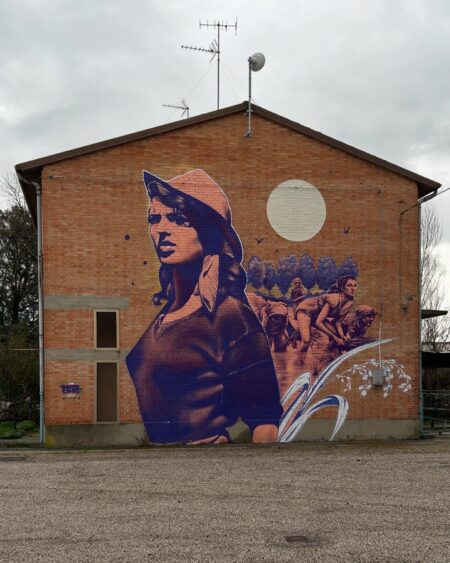
Gherardi: the village of cinema
Half an hour’s drive from Ferrara lies Gherardi—a village designed to revitalise the small district of Jolanda di Savoia through street art and cinematic tourism. Here, murals inspired by great Italian and international films bring the streets to life, transforming them into an open-air theatre.
From a distance, I picture a travelling circus arriving, someone setting the stage for a village festival. I think of Fellini—life as a grand spectacle. But my mind also drifts to Visconti, Antonioni, Rossellini, and the Neorealism that was born right here, in the heart of the Po Valley—where once marshlands and stagnant waters dominated, until generations of labourers carved out their existence, shaping the land with sweat and toil, creating Europe’s largest reclamation project, begun in 1872 and never truly completed.
The landscape, moulded by human hands, still bears the last traces of that time—an interplay of architectural styles reflecting the layered history of the 20th century’s first seventy years. Even today, old farmhouses and land reclamation buildings endure, standing as silent witnesses to a mythic past, where humankind rewrote the geography of an entire region.
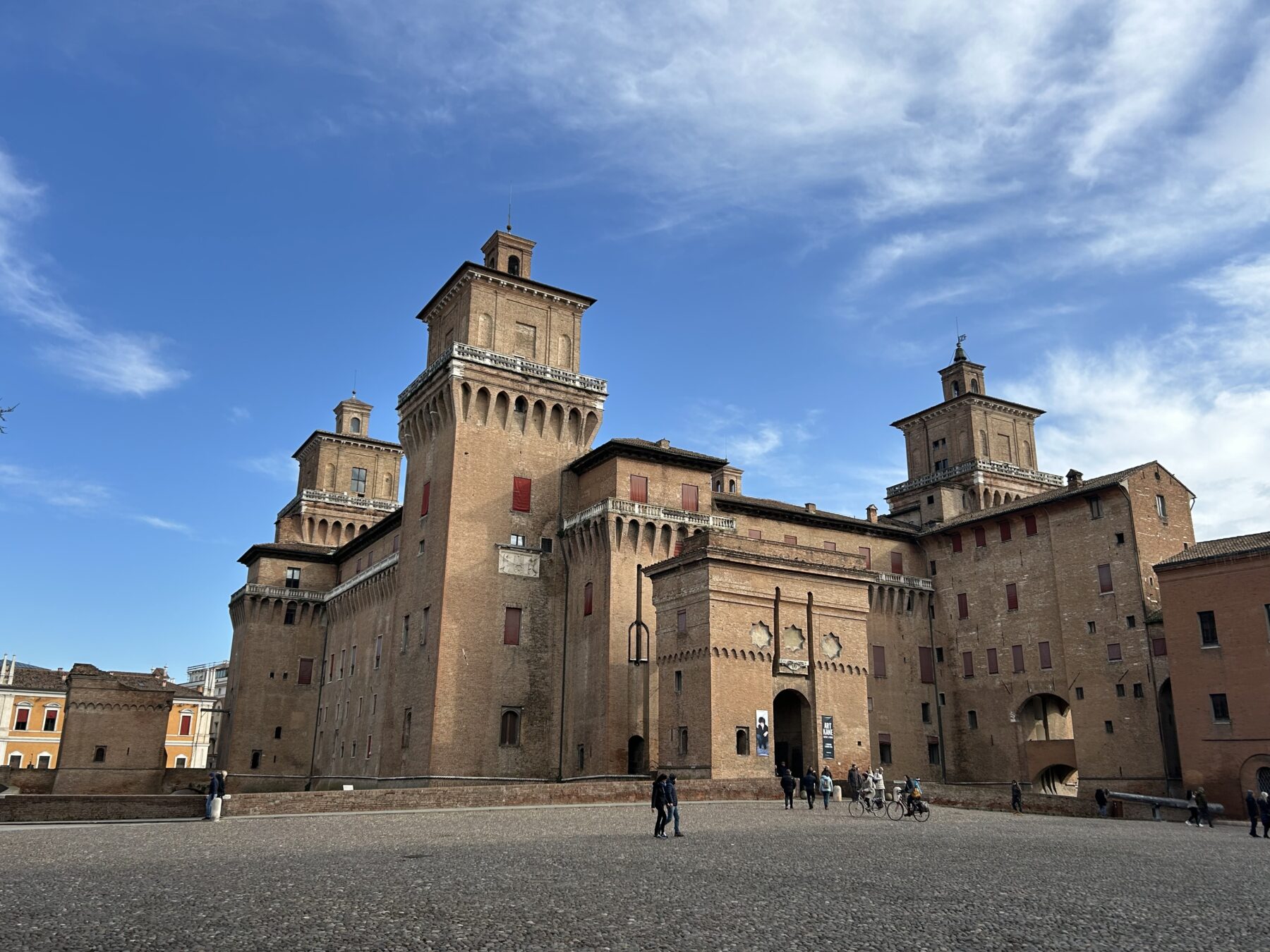
Brilliant as always, I’m there with you..thanks for bringing it to life.
Thank you for the comments and for travelling with me 😉
„Cooking is a hug at the table“ – I will remember that every night when I cook for the family from now on And it explains why people suddenly crave a certain dish when they are homesick.
Thank you for reading my article and travelling with me to Ferrara, Jasmin! And yes, I totally agree with you: people feel a strong connection with food. It goes beyond the table. It ties us all to our past, our local traditions, our family.